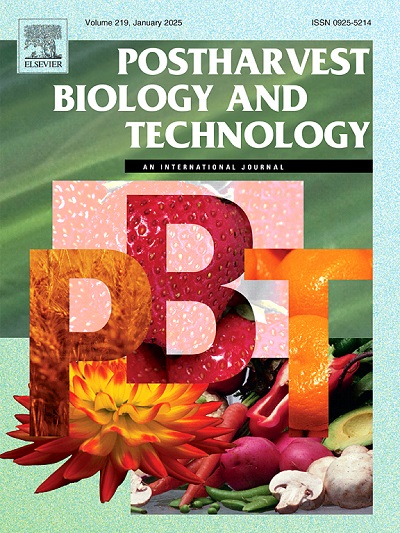Color, volatile organic and phenolic compounds in garlic after curing in a shaded environment at ambient conditions
IF 6.4
1区 农林科学
Q1 AGRONOMY
引用次数: 0
Abstract
Curing is a post-harvest practice aimed at reducing moisture content and minimizing storage losses. In the southern region of Brazil, this process is conducted in shaded conditions at room temperature for 30–90 d, primarily to reduce the moisture content of the garlic. Most studies on the post-harvest period of garlic focus on the storage phase following curing, with limited attention to the quantification of quality parameter changes during the curing process itself. In this study, the volatile compounds in cloves and the chromatic properties, total monomeric anthocyanin content, phenolic compounds, and the anthocyanin malvidin of clove skins were investigated both before and after the curing process, marking the first time these aspects have been explored in the literature. Twelve samples from cultivars Chonan, Ito, Jonas, and Caçador were collected post-harvest and 90 d later, cured in the shade using the producer's existing farm infrastructure. For the garlic bulbs, the results indicate a significant increase in the total content of volatile organic compounds in the garlic cloves after the curing process. It was observed 3.06 times more volatile compounds in cured samples than non-cured ones. Concerning the skin of Chonan variety garlic cloves, changes in color parameters were observed after the curing process, resulting in higher hue angle (1.65 times higher) and chroma (1.08 times higher) values and a lower concentration of total monomeric anthocyanins (2.95 times lower). Furthermore, fourteen phenolic compounds were identified by LCMS technique, with no clear trend observed between cured and non-cured samples. The primary phenolic compounds were protocatechuic acid, p-coumaric acid, ferulic acid, and isoquercetin. This is the first report about the presence of the anthocyanin malvidin in garlic skins, with its occurrence predominantly observed in non-cured Chonan samples. The results demonstrate that shade curing under natural climatic conditions significantly enhances the aromatic intensity and alters the color properties of garlic clove skins, indicating that this method may be effectively used to produce garlic of higher quality.
求助全文
约1分钟内获得全文
求助全文
来源期刊

Postharvest Biology and Technology
农林科学-农艺学
CiteScore
12.00
自引率
11.40%
发文量
309
审稿时长
38 days
期刊介绍:
The journal is devoted exclusively to the publication of original papers, review articles and frontiers articles on biological and technological postharvest research. This includes the areas of postharvest storage, treatments and underpinning mechanisms, quality evaluation, packaging, handling and distribution of fresh horticultural crops including fruit, vegetables, flowers and nuts, but excluding grains, seeds and forages.
Papers reporting novel insights from fundamental and interdisciplinary research will be particularly encouraged. These disciplines include systems biology, bioinformatics, entomology, plant physiology, plant pathology, (bio)chemistry, engineering, modelling, and technologies for nondestructive testing.
Manuscripts on fresh food crops that will be further processed after postharvest storage, or on food processes beyond refrigeration, packaging and minimal processing will not be considered.
 求助内容:
求助内容: 应助结果提醒方式:
应助结果提醒方式:


